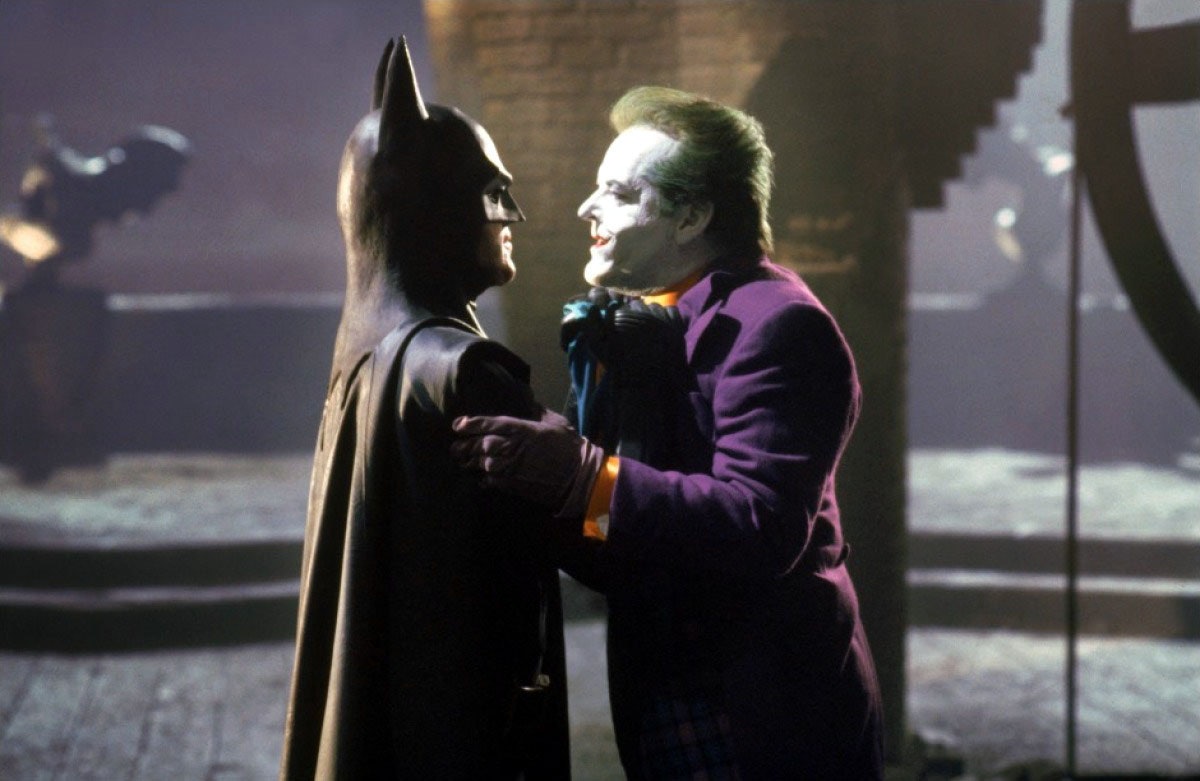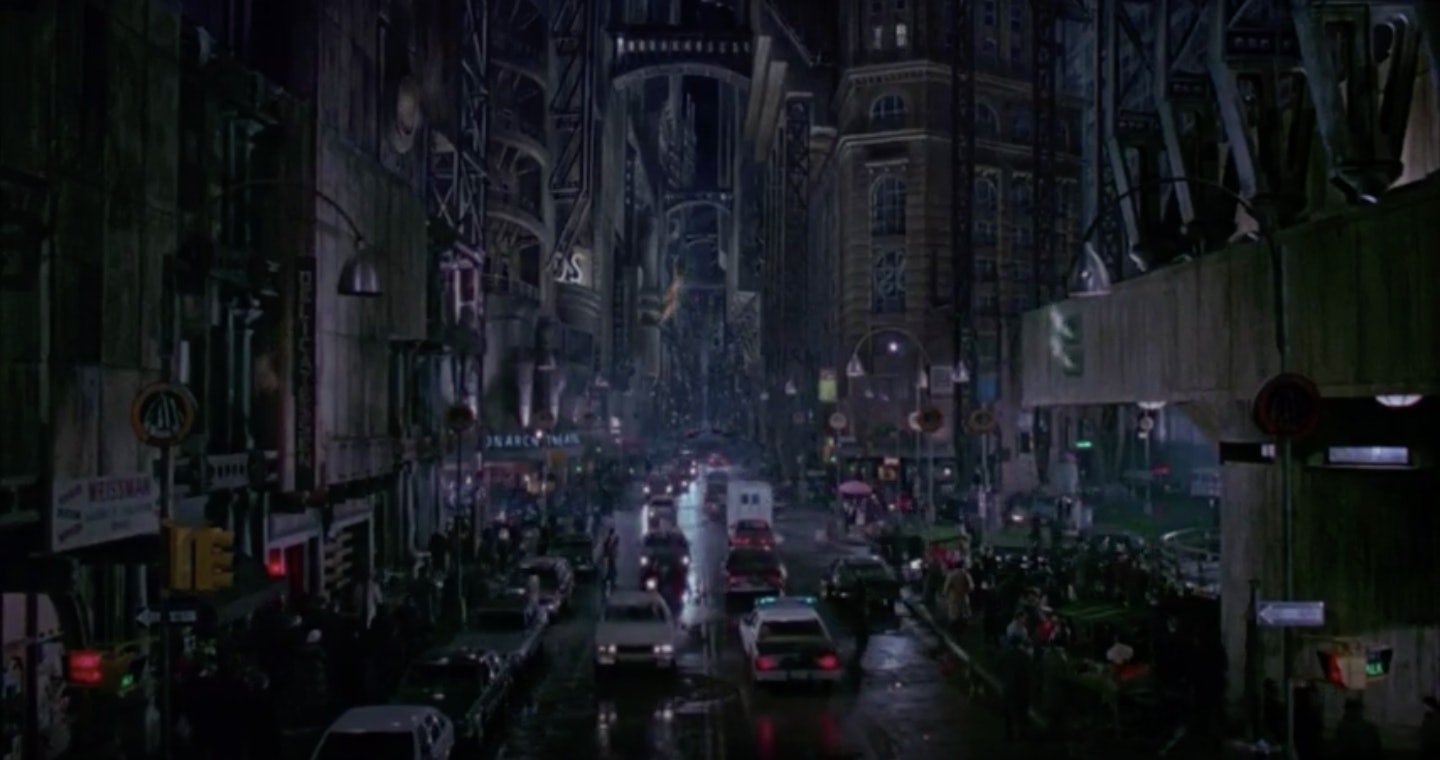
Few directors have used their directorial debuts as calling cards as much as Tim Burton. Burton’s first movie, Pee-Wee’s Big Adventure, established exactly what the filmmaker wanted to create within his movies: off-kilter oddballs trying to find their way in an on-kilter world. He wanted to throw Americana into chaos, like in the possessed “Day-O” dance sequence in his second movie, Beetlejuice.
Not only were these movies stylish and different from anything else in mainstream cinema at the time (with the exception of John Waters), they were cheap and made money. Pee-Wee made Burton a known director, and in 1988, Beetlejuice earned $74.2 million (the equivalent of $177.95 million in 2022)on a budget of $15 million. So it wasn’t a big shock that Hollywood was beating down his door for his third feature, 1989’s Batman.
Burton’s Batman was phenomenally successful, but it might seem odd to a fan of 21st-century iterations of the character and his world. There was still a need for authenticity in Batman — a character is named after the Caped Crusader’s co-creator Bob Kane, and the movie features an original drawing of his — but Tim Burton seems more concerned with making a Tim Burton movie than a Batman movie.
Burton was openly not invested in the comics, with the exception of the then-modern The Killing Joke and The Dark Knight Returns. Alan Moore, Brian Bolland, and Frank Miller have some stylistic influence, but Burton’s world is one of his own creation. He pushed back strongly against the 1960s TV show, in particular, seeing no value in ironic tribute to over-the-top characters.
Burton wanted to create his own world with little regard to how others conceived of the character. Speaking to collaborator Danny Elfman, who composed the wonderful, driving score for the movie, in a Roma Cinephilia interview, Burton says, “When I did Batman, you actually didn’t hear the word ‘franchise.’ That wasn’t even in the language.” While there was a media circus around the pick of comedic actor Michael Keaton for the lead, Burton tells Elfman that filming at Pinewood Studios in England meant he could “really go and focus on the movie and not be involved in all of the hype.”

Burton’s movie is not terribly interested in Batman or Bruce Wayne. Bruce is rich, nice, sexy, and dresses up like a bat. He’s fine. But Burton was incredibly interested in the urban dystopia of Gotham City, manifested both in gorgeous backgrounds and the person of the Joker, or Jack Napier (Jack Nicholson). Batman invests far more time in understanding the Joker — who he is, how he got to be so twisted, all the crimes he commits — than it is with the man charged with stopping him.
Of course, it helps to have someone like Nicholson in the role. He’s magnetic on screen, gleefully destroying paintings and hijacking the airwaves to Jokerfy a few unlucky models and news anchors. In one of the movie’s better bits, Gotham becomes terrified that Joker has poisoned the city’s supply of cosmetics, forcing news anchors to deliver the news with terrible hair and boils on their faces. Make-up and masks are a large part of the movie, with Joker needing to apply touch-ups to his face in order to hide his chalk-white skin.
The movie’s plot loosely revolves around photojournalist Vicki Vale (Kim Basinger) trying to find out more about the mysterious Batman while Gotham’s mayor (Lee Wallace) and district attorney Harvey Dent (Billy Dee Williams) are determined to throw a festival for the city’s bicentennial, despite rising crime. Vale, who falls for Bruce and is desired by Joker, is able to carve out a space for herself as a respected reporter. Dent, on the other hand, is woefully underused.

Only one character has signature jackets, after all. Only one character has a literal Prince song about him in the movie. This is the Joker’s showcase, a more psychotic iteration of the characters Burton had developed in his prior movies. When Vale opens a gift from the villain containing a gas mask and a note attached saying “put this on right now” in childlike handwriting, the effect is a cross between creepy and captivating.
Keaton is a very good Batman, offering both a stoic and friendly nature. He’s not permanently haunted by the death of his parents. But he, and the entire cast, are all playing in a world built around Burton.
Batman broke ground with its exploration of a darker side of the Caped Crusader, but in time its style would face a backlash of its own. Burton’s look and feel would be replicated by the legendary Batman: The Animated Series, which had the unfortunate side effect of associating it with kid’s shows. Christopher Nolan’s Batman Begins began a pull away from the glamor and beauty of Burton’s Gotham, with more of a focus on the character himself. Time will tell if the pendulum ever swings back.







